These Are the Fastest Growing Plants You Can Still Grow This Season
Get results from these veggies, herbs, and flowers before the end of summer.
Fact checked by Haley Mades
If you’re hoping for a summer harvest but you haven’t gotten around to planting yet, it’s not too late to get started—as long as you choose the right greenery. Certain plants flourish more quickly than others, which means you can plant in June or even July and still see the fruits (or flowers, veggies, herbs) of your labor before summer’s end.
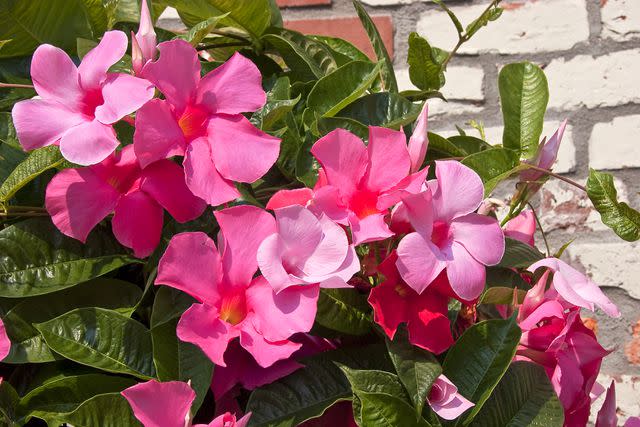
Jill Lang/Getty Images
The key, experts say, is understanding your local climate and growing conditions. “Planting in June and July can be more challenging in areas with very hot summer climates, as it takes a bit more care and attention to get plants established during periods of intense heat or drought,” says Leslie F. Halleck, certified professional horticulturist and author of Plant Parenting. “You’ll need to keep a closer eye on plants for watering needs than you would in spring or fall.”
That said, if you’re short on time or growing season, here are a few vigorous summer crops for (almost) instant gratification in just about any yard.
Related: 9 Easy-to-Grow, Flowering Plants to Elevate Your Home's Curb Appeal
Green Beans
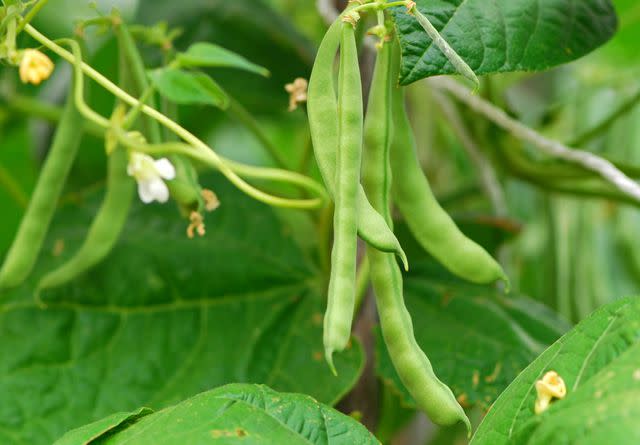
Getty Images/brytta
Green beans are a delicious addition to any garden, because they can be succession grown, Gail Pabst, gardening expert at the National Garden Bureau, explains. This means you can plant them a few times throughout the summer to get fresh beans up until frost. Some beans, such as the Mascotte bean, grow quickly, with only 50 days from sowing to harvest.
Bush beans also grow compactly and do not need a structure to grow on. “They do well in containers and in gardens,” Pabst says. Pole beans grow as climbing vines and require staking. They usually take a few additional days to produce compared to bush beans.
Summer Squash
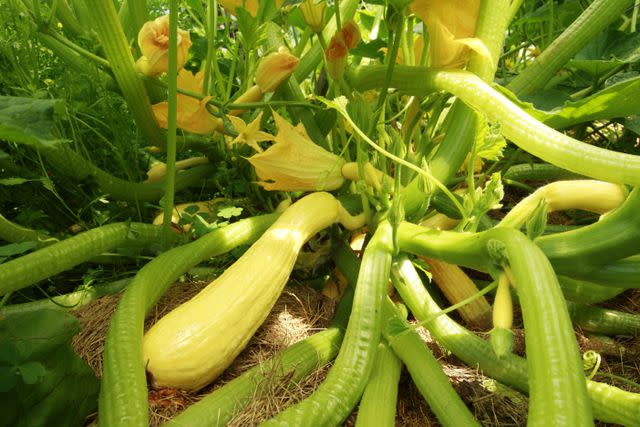
Getty Images/Steve Cicero
Many squashes are produced in a very short time span, anywhere from 35-50 days. “One bonus for planting later in the season is that you have less trouble with squash vine borer, a moth that kills squash plants early in the season,” Pabst says.
If you live in a warmer climate, you can plant your first crop in mid-March so it will harvest before the adult moths appear in May. If you want a second harvest or you missed the first window, you can also plant later in the season when the moths have moved to find a new place to lay their eggs.
If you can find them, Pabst recommends the fast-growing varieties Bossa Nova zucchini, Eight Ball squash, and Gold Rush squash.
Related: 24 Easiest Vegetables, Fruits, and Herbs to Grow for Beginners
Mandevilla
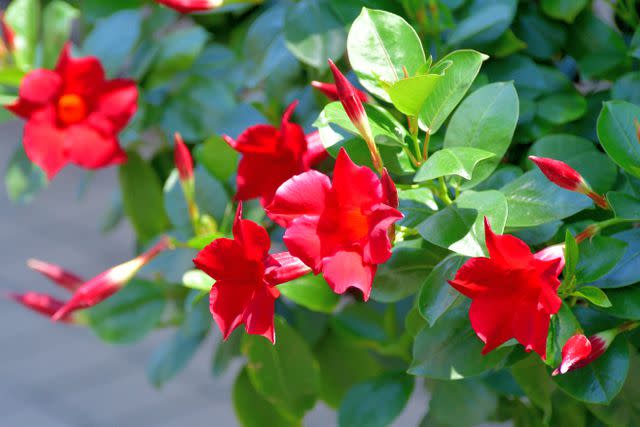
Getty Images
Mandevilla, also known as rocktrumpet, is a genus of tropical vines that produce large, trumpet-shaped flowers from spring through fall. “You’ll find cultivars with red, white, pink, or yellow flowers, all of which are fragrant and favored by hummingbirds and butterflies,” says Halleck.
To encourage late-season growth in a container, hanging basket, or garden bed with trellis support, pick a sunny location (Halleck says plants can tolerate some late afternoon shade). If your plants aren’t flowering, they probably need more sun.
Salvia (Garden Sage)
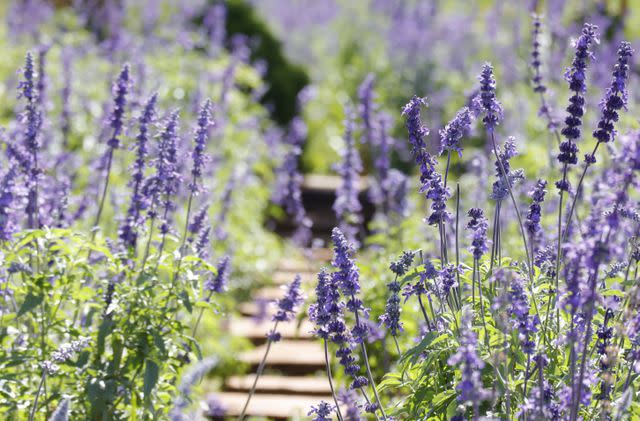
Getty Images/Thang Tat Nguyen
Garden sage—a relative of the culinary herb—produces velvety foliage and tubular blossoms in hues of pink, purple, blue, red, and white. Most species and cultivars of salvias, even perennial salvias, are fast growers and bloom continuously.
Halleck recommends annual salvia cultivars for popping in some quick color to pots or entryway beds, and perennial salvia species and cultivars to attract pollinators in sun gardens.
Coleus
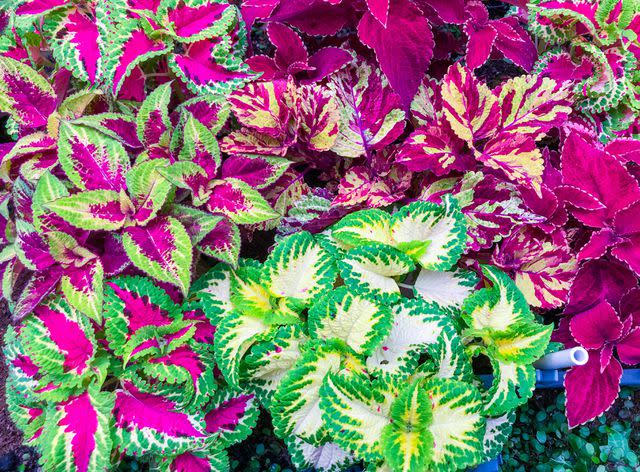
Getty Images/DigiPub
Coleus scutellarioides and its varieties and cultivars are workhorses of the garden and container plantings, Halleck says, providing both color and structure all season long.
There are many foliage colors and combinations to choose from, as well as types for both shady and sunny conditions. Plants are fast growing and prefer consistently moist (but not wet) conditions. “Coleus may wilt when dry or conditions are very hot, but will quickly perk back up once watered,” says Halleck.
Cucumbers
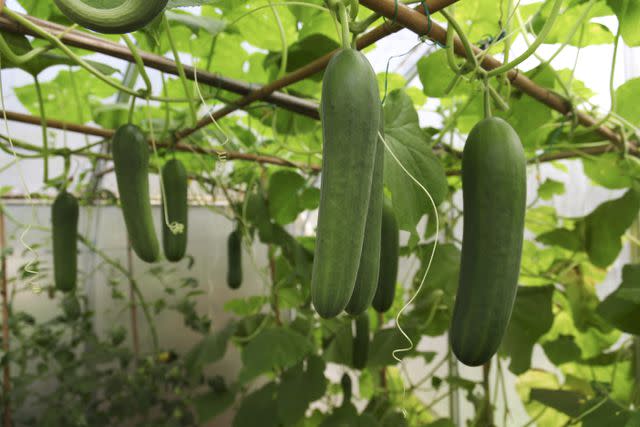
Getty Images/Anders Sellin
Like beans, you can find vining and bush varieties of cucumbers. The fastest-growing varieties, Pabst says, are the Parisian gherkin, Pick a Bushel, and Saladmore, all of which yield a harvest within around 50 days.
An important tip from Pabst: Don’t let the fruit get too large, or they will taste bitter. For gourmet mini cucumbers and pickling, pick the fruit when it's between 3 to 4 inches long. For snacking and enjoying fresh in salads, pick the cucumbers when they’re 6 to 8 inches in size.
Basil
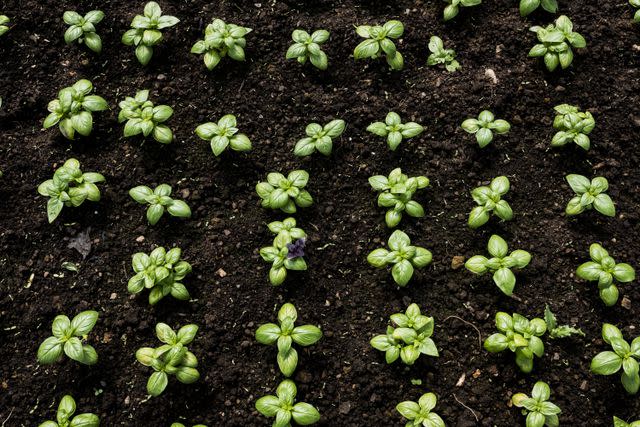
Getty Images/Mint Images
Along with enhancing your recipes, herbs make beautiful ornamentals. Basil, Halleck says, loves the heat and grows faster during the warm summer months. You can tuck it into mixed planters or garden beds in a sunny location with regular watering.
Keep in mind basil doesn’t like cool, wet soil, so if you’re in a cooler climate, plants will grow more slowly, and you’ll want to water them less. Halleck recommends letting some of your basil go to flower, “as the blooms are both beautiful and beneficial for pollinators.”
Related: How to Create a Pollinator-Friendly Garden
Greens
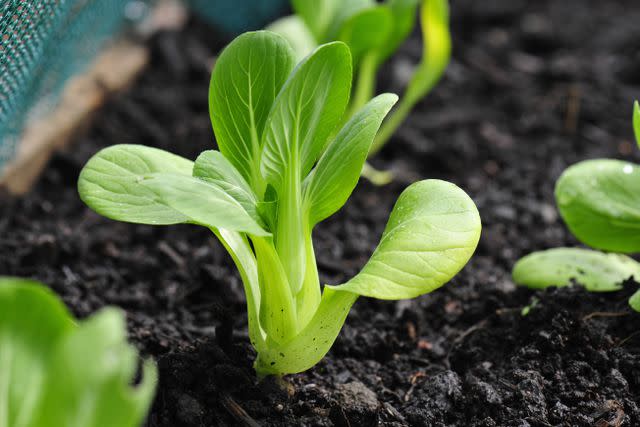
Getty Images/Kathy Collins
Greens are another quick crop you can grow (and harvest) anytime. Fully-grown greens are great for salads and stir fries, or you can harvest them much earlier and use them as baby greens.
In the warmer summer months, greens grow well in partial or full shade (but be sure to check the requirements for the specific plant you choose). Pabst recommends varieties that are slow to bolt (or go to seed), such as 'Sandy' lettuce and bok choy.
Plectranthus 'Velvet Elvis'
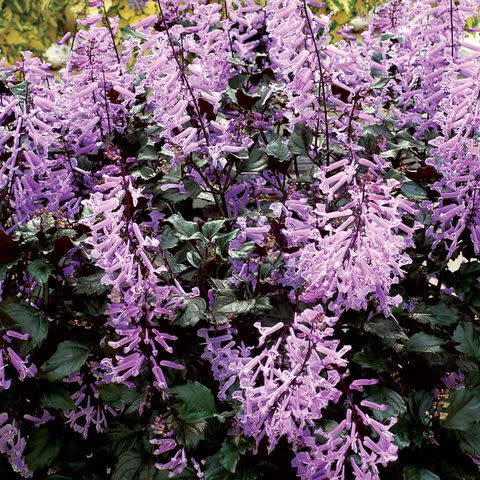
Photo courtesy of TERRA NOVA® Nurseries, Inc.www.terranovanurseries.com
These vigorous plants produce a bounty of big, purple blooms with velvety foliage in late summer and fall. They’re great for pots and sparse garden sections that don’t get great sun, as Halleck says these lavender beauties thrive in the shade. “Plants prefer loose humus-rich soil or potting mix that stays relatively moist but can tolerate some drying,” she adds.
Marigolds
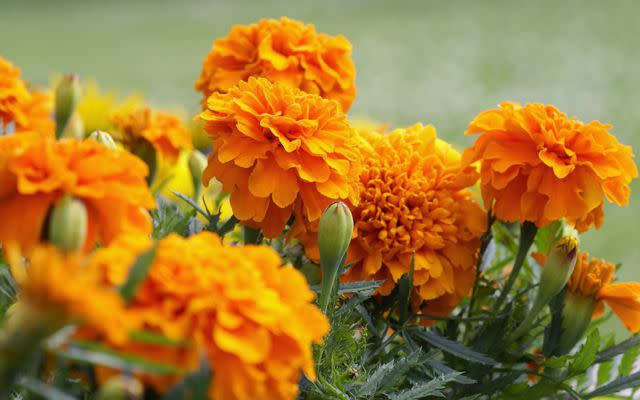
Getty Images/schnuddel
Looking for fall-inspired flowers? Pabst recommends planting marigold seeds in your garden or container. Some varieties, such as Janie Gold, bloom in six weeks from planting the seeds.
Though their coppery color reminds us of fall, marigolds can withstand the hottest temperatures of summer, and they grow quickly in full sun.
Cape Honeysuckle

Photo by Konstantinos Livadas / Getty Images
"This subtropical shrub is a great solution if you’re looking for a fast-growing plant that produces lots and lots of flowers to attract hummingbirds and butterflies," says Justin Hancock, Costa Farms horticulturalist. "They thrive in large containers, garden beds, and borders as seasonal annuals or, in frost-free regions, as evergreen perennials. Most varieties produce orange flowers, but you can also find selections that have yellow, peach, or reddish blossoms. Cape Honeysuckle is pretty drought tolerant and loves summer heat, so it’s a variety you can enjoy on a sunny deck, patio, or porch without a lot of fuss."
Passionflower

"In warm, sunny conditions, passionflowers can grow really fast—expanding a new leaf every day," says Hancock. "This quick growth rate is an evolutionary defense mechanism to protect them from hungry caterpillars. Some passionflowers can put on more than 20 feet of growth in a single season (if they have good growing conditions, of course). This makes them a great choice if you’re looking for an easy-growing flowering vine to give you showy flowers and quick privacy for your deck or patio. Bonus: Grow a couple of different compatible varieties and you can enjoy fresh, homegrown edible passion fruits!"
Plumbago
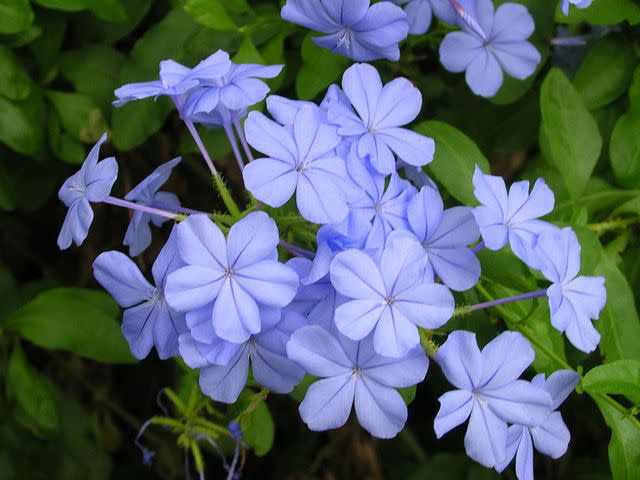
"A true garden rarity, plumbago is a fast-growing subtropical shrub that produces clusters of true-blue flowers. Once summer heat hits, it grows really fast—it’s capable of reaching more than six feet tall in a single season," explains Hancock. "It pushes all that growth all while flowering nonstop with clusters of flowers that butterflies find irresistible. It’s also exceedingly low care, can tolerate drought and heat, and is deer- and rabbit-resistant."
How to Get Plants to Grow Faster
Want plants to grow faster? Halleck says factors such as temperature and light are typically the biggest influences on how fast your plants do or don’t grow, followed by generally good garden care, such as healthy soil and consistent watering. If plants appear to be nutrient deficient—often seen when their leaves turn pale green—consider feeding them with a natural, water-soluble plant fertilizer and see if they grow healthier and faster.
"If you’re growing plants in containers, repotting as they start to become rootbound can make a big difference in their growth rate," says Hancock. "Rootbound plants grow slower, and many varieties respond to their roots filling the pot by stunting growth."
Related: Yes, You Should Fertilize Your Houseplants—Here's How
For more Real Simple news, make sure to sign up for our newsletter!
Read the original article on Real Simple.


